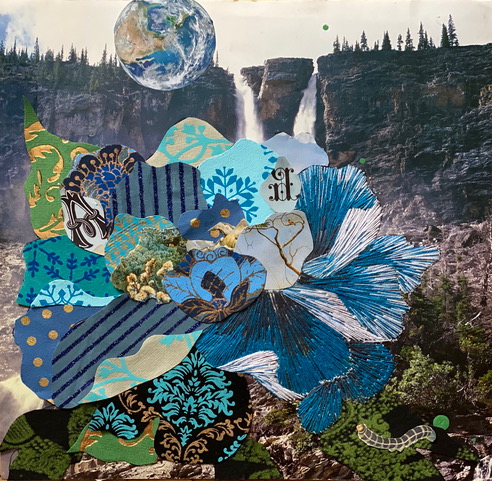Les objets confectionnés sont porteurs de signification
Contenu principal de l'article
Résumé
Cet article s’intéresse aux différents aspects contributifs au parcours ou à l’histoire de vie d’un objet confectionné. Dans le cas de tels objets, cela inclut l’origine des matériaux, le lien entre l’artisan et le récit historique des pratiques d’artisanat. L’histoire des échantillons crochetés est rapportée par le biais de la poésie et de récits écrits à caractère visuel, dans le but de mettre en évidence les agents dynamiques de la « création » d’objets, sans oublier la contribution potentielle de résultats non souhaités à l’artisanat et à l’apprentissage.
Mots-clés: artisanat, matériaux, relations entre objets et humains, poésie.
Téléchargements
Renseignements sur l'article

Cette œuvre est protégée sous licence Creative Commons Attribution - Partage dans les Mêmes Conditions 4.0 International.
The copyright notice is CC BY SA.
This license lets others remix, tweak, and build upon your work even for commercial purposes, as long as they credit you and license their new creations under the identical terms. All new works based on yours will carry the same license. Thus any derivatives will also allow commercial use. For example, if someone translates your article into French, the French version of the article will also have to be shared under a CC BY SA license.
Références
Bauer, A. A. (2019). Itinerant objects. Annual Review of Anthropology, 48, 335–335. https://doi.org/10.1146/annurev-anthro-102218- 011111
Flower, C. (2016). Wilful design: the sampler in nineteenth-century Britain. Journal of Victorian Culture, 21(3), 301–321. https://doi.org/10.1080/13555502.2016.1195765
Garber, E. (2019). Objects and new materialisms: a journey across making and living with objects. Studies in Art Education: A Journal of Issues and Research in Art Education, 60(1), 7–21. https://doi.org/10.1080/00393541.2018.1557454
Henri, R. (2019). 6 Samples in Tunisian crochet [crochet]. https://rachelhenri.com/en/dont-trust-yarn-labels/
Hood, E. J., & Kraehe, A. M. (2017). Creative matter: new materialism in art education research, teaching, and learning. Art Education, 70(2), 32–38. https://doi.org/10.1080/00043125.2017.1274196
Maurice Brassard Fils Inc. (n.d.). http://www.mbrassard.com/index-ang.html Page, T., & Thorsteinsson, G. (2019). The Significance of practicing craft in the modern society. I-Manager's Journal on Educational Psychology, 12(3), 1-12. https://doi.org/10.26634/jpsy.12.3.14662
Ruddel, D. T. (1983). The domestic textile industry in the region and city of Quebec, 1792-1835. Material Culture Review. https://journals.lib.unb.ca/index.php/MCR/article/view/17159
Turney, J., O. (2012). Making love with needles: knitted objects as signs of love? Textile: The Journal of Cloth and Culture, 10(3), 302–311. https://doi.org/10.2752/175183512X13505526963949
Tweddle, M. (1897). Crochet corner sampler [needlework]. Victoria and Albert Museum, London, England. Sample | Unknown | V&A Explore The Collections (vam.ac.uk)
What is Life-Writing by The Oxford Centre for Life-Writing at https://oclw.web.ox.ac.uk/what-life-writing. Accessed on May 14, 2024

